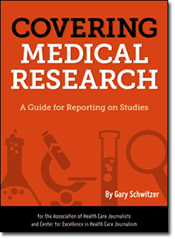Physician and blogger Alex Lickerman used a discussion he had regarding hormone replacement therapy and breast cancer as an opportunity to explain absolute versus relative risk. It’s a an issue we’ve tackled in Covering Health before (Thanks, Ivan), but the difference between an 83 percent jump in relative risk and a 10.5 percent increase in absolute risk is so fundamental that we’re happy to spotlight Lickerman’s particularly newsworthy example.
In case you don’t have time for Lickerman’s entire tale, here’s one of his smaller examples. It’s a blunter version of the same overall point.
Studies show in patients who’ve had a heart attack that taking one aspirin a day reduces their relative risk of having a heart attack over nearly a 10-year period by almost 50%. In patients over the age of 80, for example, whose absolute risk of having a heart attack can be as high as 12% in just the first six months following their first heart attack, this amounts to a recalculated absolute risk of 6%. Arguably still significant, but not nearly as much as the 50% relative risk reduction commonly bandied about in medical circles.
Related
For more on relative and absolute risk, as well as other statistical concepts that are important in health journalism, be sure to download AHCJ’s latest slim guide, “Covering Medical Research.”
 The guide helps journalists analyze and write about health and medical research studies. It offers advice on recognizing and reporting the problems, limitations and backstory of a study, as well as publication biases in medical journals. It includes 10 questions you should answer to produce a meaningful and appropriately skeptical report. This guide, supported by the Robert Wood Johnson Foundation, will be a road map to help you do a better job of explaining research results for your audience.
The guide helps journalists analyze and write about health and medical research studies. It offers advice on recognizing and reporting the problems, limitations and backstory of a study, as well as publication biases in medical journals. It includes 10 questions you should answer to produce a meaningful and appropriately skeptical report. This guide, supported by the Robert Wood Johnson Foundation, will be a road map to help you do a better job of explaining research results for your audience.




